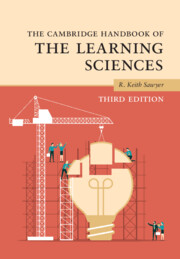Book contents
- The Cambridge Handbook of the Learning Sciences
- The Cambridge Handbook of the Learning Sciences
- Copyright page
- Contents
- Figures
- Tables
- Contributors
- Preface
- 1 An Introduction to the Learning Sciences
- Part I Foundations
- Part II Methodologies
- Part III Grounding Technology in the Learning Sciences
- Part IV Learning Together
- Part V Learning Disciplinary Knowledge
- Part VI Moving Learning Sciences Research into the Classroom
- Index
- References
1 - An Introduction to the Learning Sciences
Published online by Cambridge University Press: 14 March 2022
- The Cambridge Handbook of the Learning Sciences
- The Cambridge Handbook of the Learning Sciences
- Copyright page
- Contents
- Figures
- Tables
- Contributors
- Preface
- 1 An Introduction to the Learning Sciences
- Part I Foundations
- Part II Methodologies
- Part III Grounding Technology in the Learning Sciences
- Part IV Learning Together
- Part V Learning Disciplinary Knowledge
- Part VI Moving Learning Sciences Research into the Classroom
- Index
- References
Summary
The learning sciences (LS) is an interdisciplinary field that studies teaching and learning. This chapter explains how the thirty-three chapters are organized. The chapter is grouped into four key themes: (1) a shift from thinking of knowledge as facts and procedures to a conception of knowledge as situated in visible practice; (2) an expansion of a view of learning from purely cognitive to a sociocultural view that also incorporates collaboration and conversation; (3) the role of technology in learning; (4) research methodologies used in LS. The chapter closes with a short history of the field of LS from the 1980s through the present.
Keywords
- Type
- Chapter
- Information
- The Cambridge Handbook of the Learning Sciences , pp. 1 - 24Publisher: Cambridge University PressPrint publication year: 2022
References
- 9
- Cited by

